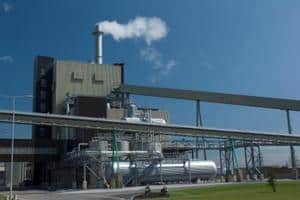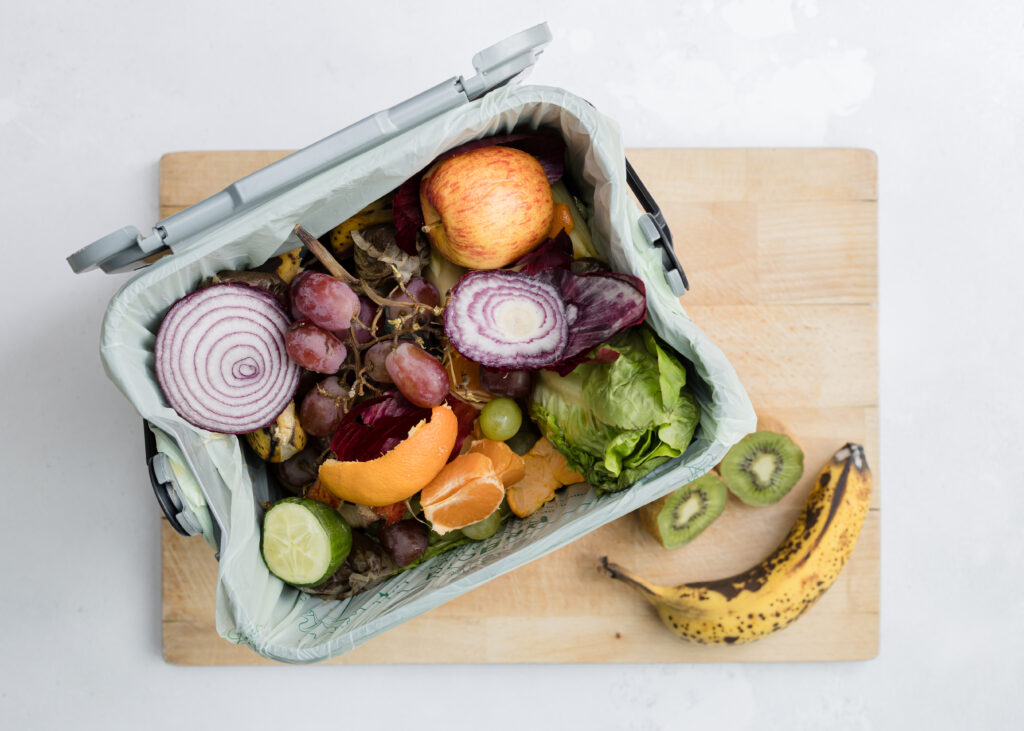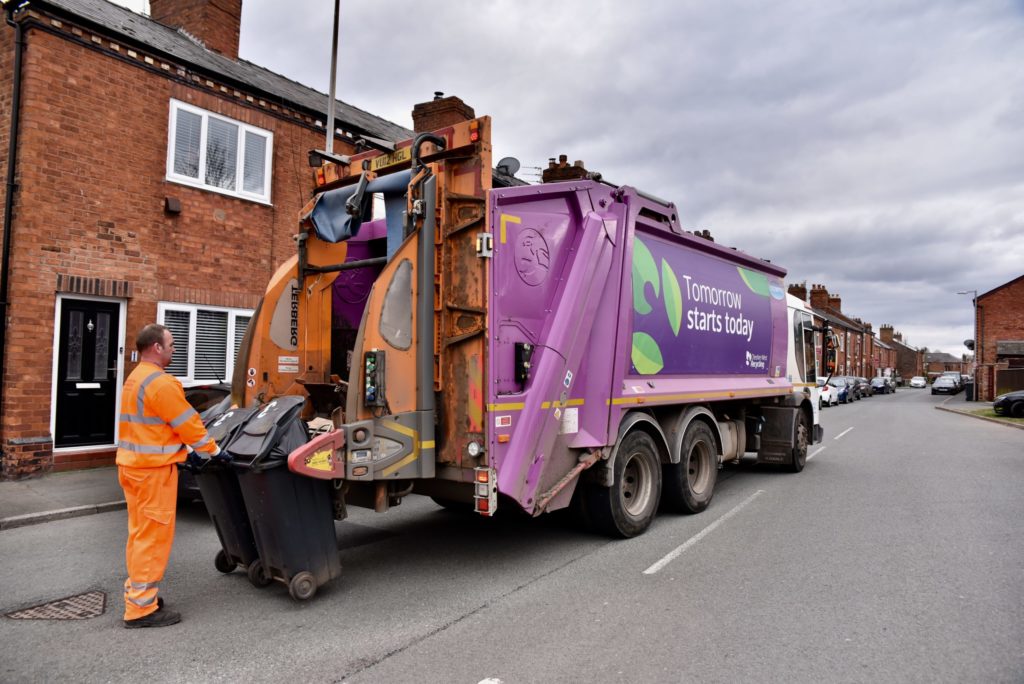As John Sanderson, UPM’s head of environmental market support, explains: “This mill has been here for over 20 years but it has completely changed in that time. The mill used to take 100% virgin material as its fibre source and was much smaller. We have come a long way since then.”
Occupying a former British Steel site, the Shotton mill originally had just one paper machine, known as PM1. Then, in 1989, UPM installed its first paper recycling machine, known as RCF1, and a second paper machine (PM2), allowing it to use some recovered fibre for paper making for the first time.
In 2002, UPM took the bold move to convert the entire plant to using 100% recovered paper – which was no mean feat.
Not only did the facility require additional facilities to remove ink from the paper, it also required very careful stock control because the mill requires a huge amount of feedstock and only has storage for seven to 10 days’ worth of input material.
Mr Sanderson says: “One of the things we were aware of when we converted the plant from virgin to recovered was the risk element. We rely on millions of householders putting out material each week, which can cause problems at times like bank holidays, but fortunately we have not run out yet.”
Advantages
Despite some risks, there were huge advantages to converting to recovered paper. As the UK has a population of over 60 million, with only 11% forest cover, UPM explained that it made sense to harvest the mountains of waste paper available – with obvious environmental benefits as well.

Another market driver was the voluntary agreement reached between Defra and the Newspaper Publisher Association in 2000 to increase the recycled content of newsprint to 70% by 2006 – meaning that demand for newsprint made from recovered paper was high.
Commenting on how this had protected UPM, while some other mills had closed, Mr Sanderson says: “Fine paper and speciality papers account for lots of grades lost in the UK. What they have been replaced with is mills like Shotton – as newsprint is the economic model that works.”
Using this model, Shotton now takes recovered paper from between 400 and 500 suppliers and says that it deals either directly or indirectly with one in three local authorities in the UK.
While the majority of the material is source-separated, the firm has also started taking some mixed paper which has originated from commingled streams due to the increasing number of councils collecting material via this route. The firm sorts it into a news and pams grade before it is used in the mill.
However, UPM claims this collection route still has an inevitable effect on quality.
As a result, the company is a supporter of the Campaign for Real Recycling – which promotes kerbside sorting over commingled collections – through its membership of Paperchain, the Confederation of Paper Industries’ recycling campaign group.
Commingled
Mike Burgess, RCP (recovered paper) sourcing manager at UPM, and former technical manager for paper at the Waste & Resources Action Programme, says: “We do take some commingled material as more and more councils are going that way but there are a lot of MRFs that do not make our quality specification.”
“I think undoubtedly there is a link between a reduction in quality and increase in commingled collections. Lack of quality creates consequences for mills like Shotton. The cost of contamination to UPM in 2008 was £2 million due to factors including taxation, down time, and general wear and tear.”
To help overcome these barriers, UPM works actively with councils to help maximise the quality of material as early down the chain as possible. It also prefers long contracts because these not only guard against price fluctuations but also pave the way for partnership working.
Dr Burgess says: “We are able to do more with a local authority off the back of a ten year contract than on the spot so over half our materials are contracted.
“Local authorities have targets to meet but we want to reach as far down the supply chain as possible. If we can get to the beginning we have more control over quality,” he adds.
Process
Once UPM sources the 640,000 tonnes of paper it requires each year at Shotton – from both post-consumer and pre-consumer sources – it is inspected for quality and then fed onto a conveyor belt which takes it to an enormous drum pulper made by Austrian-based technology firm Andritz.
The pulper mixes the fibre with water and has small holes of 6mm in size which allow fibres to fall through and screen out larger contaminants. The material then goes through 2mm screens which remove staples before being transported to flotation tanks for de-inking in a facility engineered by German paper machine specialist Voith.
Here, soap is added to the fibre and combines with the ink in the paper to make a hydrophobic particle. Air is then injected so that an inky froth forms on top of the fibre. The ink is then de-watered and sent for incineration, while the water is re-used in the pulper.
Finally, the fibre reaches a paper machine made by Finland-based paper technology firm Valmet where water is removed and the pulp is squeezed between rollers. At the end of the process, the paper is pressed between two stainless steel rollers which give it a smooth surface for printing. It is then passed through a sensor and then cut into appropriate widths, wrapped and dispatched in large rolls.
Altogether, Shotton produces 500,000 tonnes of newsprint in this way, of which 50% is sold within 70km of the mill. Customers include News International, a group of companies which print titles including the Sun, Times and Londonpaper.
Andrew Bronnert, head of energy & utilities at UPM, explains: “We make enough paper to cover the M56 motorway to Manchester every hour. It’s a huge quantity of paper we make.”
UPM, however, is keen to stress that its business is not only about paper. Its vision is to become the frontrunner in creating value from renewable and recyclable materials and this is reflected in the restructure which the firm recently undertook.
All the company’s previous paper divisions are in now one division and there are two other divisions – with one representing energy and pulp and the other representing engineered materials.
This restructure is reflected at the Shotton site, where three years after converting to 100% recovered fibre, the Shotton mill took a further step towards sustainability. In 2005, UPM secured a WRAP grant to help convert the mill to 100% recycled newsprint and to recover the the resulting waste, or sludge, through combustion. UPM has built a sludge and biomass boiler which today towers over the site and provides a third of the electricity and 90% of the steam used in the paper-making process.
The boiler was initially seen as a solution to the problem of extra waste sludge created by the conversion to 100% recovered paper, but has also provided an outlet for other wastes.
Mr Bronnert explains: “The boiler was built primarily as a solution to the sludge. Some paper makers burn it along with gas but because of UPM’s background in wood we selected the co-fuel as being biomass. It is a mixture of forestry waste – branches etc, and recycled wood – chipboard, MDF from municipal and industrial clearances. We burn about 200,000 tonnes a year of sludge and 300,000 tonnes a year of other biomass.”

He adds: “A lot of biomass CHP is not that efficient as there is no use for the steam. That is one of the things that Shotton is good at.”
Looking to the wider picture, UPM is also involved with developing new engineered materials such as a ProFI wood plastic composite made from the recovery of self-adhesive label paper waste, and biofuels made from a substance in wood known as lignin which is extracted during some pulp-making processes.
In testament to these environmental efforts, UPM was, in April 2009, awarded a Queen’s Award for Enterprise in the category of sustainability (see letsrecycle.com story).
Future
Looking to the future, UPM acknowledged the competition which could be presented by the opening of the Palm Paper mill in Norfolk this year, which is expected to requirfe an additional 400,000 tonnes of news and pams a year.
Dr Burgess says: “Palm is going to alter things. But we are glad that UK capacity is increasing and we are happy with some competition as long as things don’t get distorted. What Palm and we don’t want is a sudden demand, as it drives everybody’s price up. There will be extra competition for quality but we are still confident.”
He adds: “UPM has increased the size of its sourcing team in the UK and Ireland and when the market crashed last year we were largely unaffected. That is testament to the fact that our strategy works.”










Subscribe for free